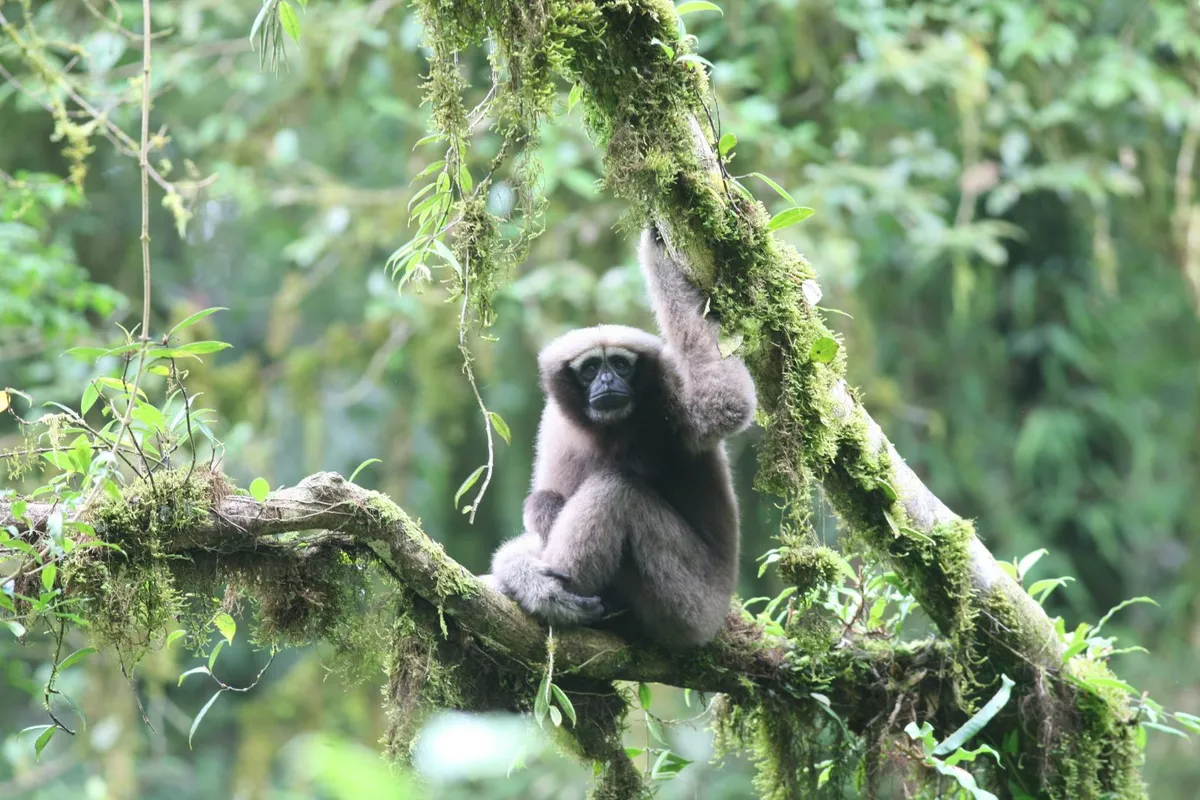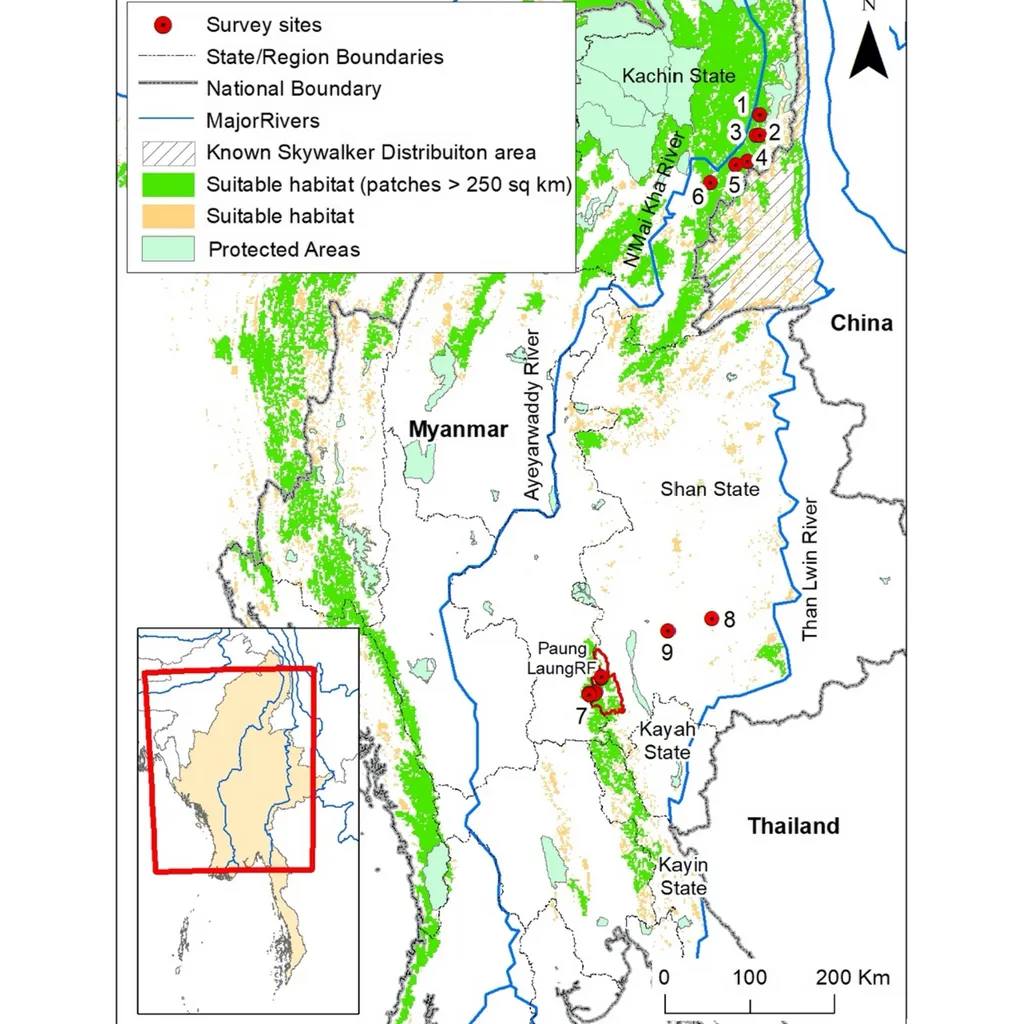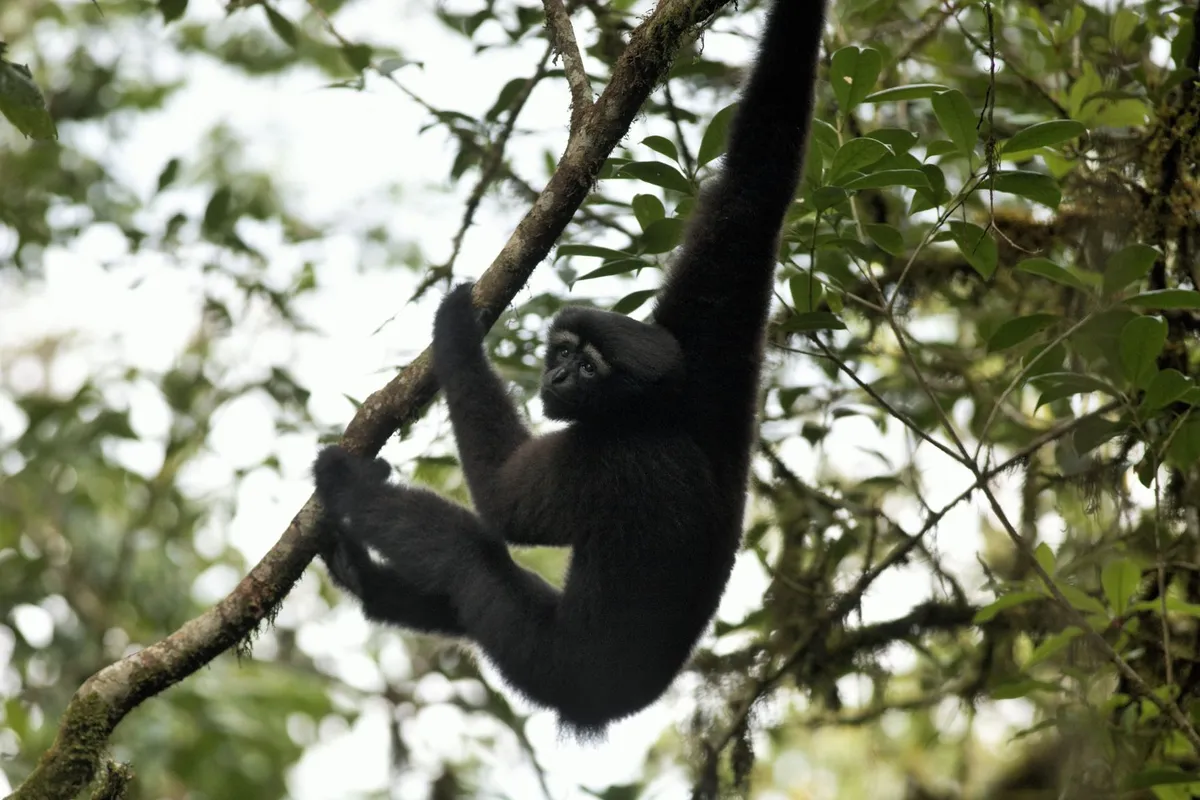Until now, the population of Skywalker gibbons (Hoolock tianxing) – a species of arboreal primate first identified in China in 2017 – stood at less than 200 individuals. Now, thanks to new research, including acoustic monitoring of the gibbon's morning songs, the species’ range has been confirmed to stretch into Myanmar.
Although these findings increase the species’ known population size and distribution, Skywalker gibbons in Myanmar are threatened by local habitat loss and degradation.
Researchers hope that the new discovery will lead to better protection for areas inhabited by gibbons, also benefiting multiple other species of flora and fauna, as well as the people and communities that rely on these forests.
- Skywalker hoolock gibbon species guide
- 10 animals named after Star Wars characters, from Jedi ants to Skywalker apes
- ‘Theory of mind’ demonstrated in great apes
- What are primates?

How scientists discovered Myanmar's Skywalker gibbons
The endangered Skywalker gibbon was first identified as a distinct species in China in 2017. Key differences between this species and its close relative, the eastern hoolock gibbon, include thinner eyebrows, a black or brown beard instead of a white one and incomplete white face rings on the females.
Since it was first identified, experts believed the distribution of the Skywalker gibbon to extend into Myanmar but, with no recorded sightings, weren't able to verify the theory.
Now, new research published in the International Journal of Primatology has confirmed the existence of the species in Myanmar.
Between December 2021 and March 2023, a field team, led by Fauna & Flora and Nature Conservation Society Myanmar, undertook expeditions to six sites in Myanmar's Kachin State and three sites in Shan State to determine the presence of Skywalker gibbons. One of the most exciting parts of the study involved the use of acoustic monitoring systems, which were set up at the sites. Each morning, researchers listened to the Skywalker gibbons’ songs and identified their locations.
Listen to the evocative song of the Skywalker gibbon
The team also collected chewed-up plants that had been discarded by the gibbons: "We collected samples of dropped plants or fruits when a gibbon moved to a new foraging tree, cut out the portion of the discarded plant or fruit material that was most masticated using disposable sterile scalpel blades, and placed plant material in DNA/RNA Shield," says the paper.
This non-invasive DNA sampling technique was created by Tierra Smiley Evans, One Health Institute in the UC Davis School of Veterinary Medicine. The analysis enabled the team to confirm 44 new groups of Skywalker gibbon in Myanmar. The exact number of individuals is unknown.

Professor Pengfei Fan, a scientist at Sun Yat-Sen University who was involved in the initial discovery of the Skywalker gibbon in China, says: “This is a very important discovery. Since we described this species in 2017, I have long been thinking about the distribution and population of Skywalker gibbons in Myanmar.
"Considering the very small population in China (less than 200 individuals), Myanmar plays the most important role in conserving this species.
"I hope more resources will be invested to protect this species and its habitat in both Myanmar and China.”
"The analysis enabled the team to confirm 44 new groups of Skywalker gibbon in Myanmar."
The future for Skywalker gibbons
Despite the increase in Skywalker gibbons’ known population size and distribution, the species remains at risk from local habitat loss, degradation and fragmentation, among other things. As a result, researchers recommend that the IUCN Red List status of the Skywalker gibbon should remain as Endangered.
Ngwe Lwin, Fauna & Flora’s Country Director in Myanmar and a leader of the expedition, says that the confirmation of Skywalker gibbons is "a significant discovery for the future of primate conservation in Myanmar," whilst conceding that "while there are now more confirmed groups of Skywalker gibbons in the wild, it is feared that their populations are fast declining due to habitat degradation and loss, and poaching."

Myanmar's existing protected area system includes just 4% of suitable habitat for Skywalker gibbons. The paper states that the best approach is to combine government-organised protection with community protected areas, suggesting this to be a viable and more immediate conservation solution for this species.
During the study, two communities declared a willingness to establish community protected areas to support gibbons; with one expressing an interest in starting a gibbon conservation awareness programme to prevent hunting.
"With the new data collected during this study, we hope to continue working with the government and local communities to establish better protection for areas inhabited by gibbons; benefiting multiple fauna and flora species, and the communities that rely on these forests too," says Ngwe Lwin.
“Now more than ever, it is recognised that the collective efforts of stakeholders, including governments, communities and Indigenous Peoples’ groups, are the only effective way to protect and save our closest living relatives,” concludes Ngwe Lwin.
The paper can be found at: https://link.springer.com
- 15 weirdest animals: meet the weird freaks and oddballs of the natural world
- Weirdest fish: 12 of the strangest fish in the world
Image credit: Professor Pengfei Fan, Sun Yat-Sen University | Audio credit: Fauna & Flora

